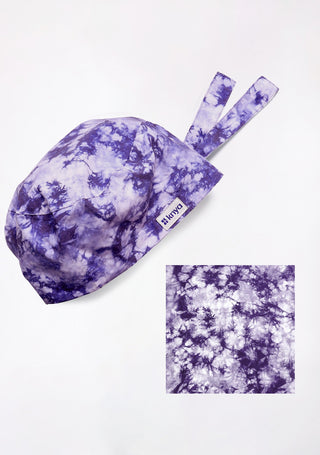Surgical scrubs are an essential component of infection control in healthcare settings. By following best practices, such as choosing antimicrobial fabrics, maintaining strict laundering protocols, and minimizing contamination risks, healthcare professionals can significantly reduce the spread of infections.As technology advances, innovative solutions such as antimicrobial fabrics, smart scrubs, and UV sanitization methods are enhancing scrub hygiene further. However, the key to effective infection control remains in strict compliance with hospital guidelines and continuous education on best practices.
The Importance of Surgical Scrubs in Infection Control
Surgical scrubs play a critical role in maintaining a sterile environment in hospitals, particularly in operating rooms, intensive care units, and emergency departments. They are designed to be simple, easy to clean, and made from materials that minimize the spread of microorganisms.
How Surgical Scrubs Help Prevent Infections
- Barrier Protection: Scrubs act as a physical barrier, preventing bacteria and viruses from transferring between healthcare workers and patients.
- Minimizing Contaminants: Unlike regular clothing, scrubs are made from tightly woven, antimicrobial fabrics that prevent the accumulation of pathogens.
- Easy Decontamination: Scrubs are designed to withstand frequent washing at high temperatures, eliminating harmful microbes effectively.
- Standardization: Standardized scrubs reduce the variation in personal clothing that may introduce contaminants into a sterile environment.
Best Practices for Wearing and Handling Surgical Scrubs
Choosing the Right Scrubs
- Select scrubs made from antimicrobial fabric to reduce bacterial growth.
- Opt for properly fitting scrubs to ensure ease of movement and minimize contamination risks.
- Use hospital-provided scrubs rather than personal scrubs to maintain uniform hygiene standards.
Proper Wearing Techniques
- Always wear clean scrubs before entering a sterile or semi-sterile area.
- Avoid wearing scrubs outside the hospital to prevent exposure to external contaminants.
- Limit accessories, such as jewelry or watches, as they can harbor bacteria and interfere with hand hygiene.
- Tuck in loose clothing to prevent accidental contamination.
Click here to Explore All Women's Scrubs and discover our complete collection of comfortable and stylish medical apparel
Hand Hygiene and Scrub Attire
- Wash hands thoroughly before and after handling scrubs.
- Use alcohol-based hand sanitizers before putting on and after removing scrubs.
- Wear sterile gloves when handling contaminated or infected patients.
Proper Laundering and Storage
- Follow hospital guidelines for laundering scrubs, ensuring they are washed at high temperatures.
- Store clean scrubs in a dedicated locker or sterile area to prevent contamination.
- Change into fresh scrubs if they become visibly soiled, damp, or exposed to bodily fluids.
Avoiding Cross-Contamination
- Do not touch or adjust scrubs unnecessarily once they are worn.
- Avoid sitting in non-sterile areas while wearing surgical scrubs.
- If working in high-risk areas, consider changing scrubs more frequently to maintain sterility.
Additional Infection Control Measures in Healthcare Facilities
Use of Personal Protective Equipment (PPE)
- Wear gowns, gloves, and masks along with scrubs in high-risk settings.
- Dispose of single-use PPE immediately after patient interaction.
- Follow strict donning and doffing procedures to prevent contamination.
Maintaining a Sterile Environment
- Regularly disinfect surgical rooms and medical equipment.
- Ensure proper ventilation and air filtration to limit airborne pathogens.
- Implement strict hand hygiene protocols for all healthcare staff.
Training and Compliance
- Conduct regular training sessions for healthcare staff on proper scrub usage.
- Enforce hospital policies regarding scrub changes, laundering, and restricted areas.
- Monitor compliance through infection control audits to identify and address hygiene lapses.
The Role of Technology in Enhancing Scrub Hygiene
Antimicrobial Scrub Fabrics
Recent advancements in medical textiles have led to the development of scrubs with built-in antimicrobial properties. These fabrics contain silver or copper nanoparticles, which have natural antibacterial effects, reducing microbial growth.
Smart Scrubs with Embedded Sensors
Some modern scrubs come equipped with RFID (Radio-Frequency Identification) or IoT (Internet of Things) sensors that monitor hygiene compliance. These smart scrubs can track how often healthcare professionals change their attire, ensuring adherence to infection control protocols.
UV Sanitization for Scrubs
Some hospitals have introduced UV sterilization chambers for disinfecting scrubs between uses. This technology enhances hygiene by eliminating pathogens without relying solely on high-temperature laundering.
Discover the best lab coat designed for comfort and protection. Shop from here.
Common Mistakes to Avoid in Scrub Hygiene
- Wearing scrubs outside hospital premises: This exposes the scrubs to environmental contaminants and increases the risk of hospital-acquired infections.
- Using the same scrubs for multiple shifts: Scrubs should be changed after each shift to maintain cleanliness.
- Neglecting proper laundering: Home washing may not remove all bacteria; it is best to follow hospital-grade laundry procedures.
- Touching scrubs frequently: Unnecessary adjustments can transfer pathogens from the hands to the scrubs.
- Ignoring proper fit: Loose or tight scrubs may interfere with movement and hygiene practices.












